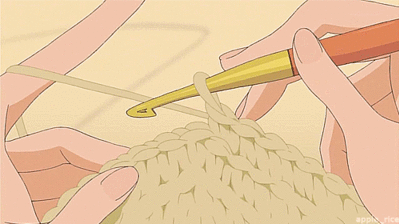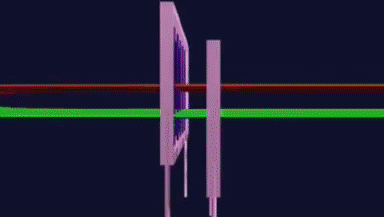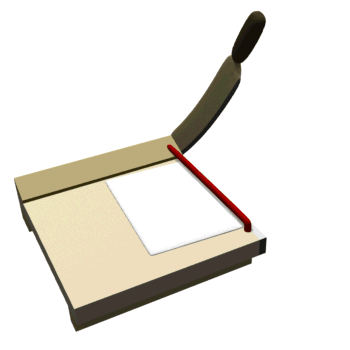

bringing A COMMUNITY
OUT OF POVERTY.
PLASTIC BAG SLEEPING MATS.
A PROJECT BY MZUMC.

BACKGROUND
TIME SAVED WITH NEW SYSTEM
Hand Weaving
Loom
Hours - 3
Hours - 20
Old String Method
Proposed String Method
Hours - 5
Hours - 30
Borcherding, S., & Moore, A. (2017, February 1). Making a Mat: The Time it Takes [Telephone interview].
Vague time length was known beforehand; interview was based on personal experience.
WHY SLEEPING MATS
The Montrose Zion UMC youth has made monthly trips to inner-city Akron to feed the homeless since 2015. Around 150 people are fed a hot meal each visit, and occasionally there are other items passed out such as hygiene kits or clothing. Eventually, a group of adults in the church began crocheting large sleeping mats out of plastic bags. The workload put into each mat was over 50 hours, with 30 hours being dedicated to cutting the bags into the string and 20 hours crocheting the string into the mat. Hundreds of plastic bags have to be cut to make enough material. This meant that even with a sizable group involved in making these mats, only one or two would be completed each month. These mats were set aside for people who asked specifically for them. Because they are made of plastic, they are waterproof. The thickness also makes them comfortable and durable to lay on.
ADVANTAGES OF A LOOM
As future engineers, Ian Kauffman and Kyle Fertig decided to design and build a loom in order to speed up the process of crocheting the sleeping mats. A loom changes the design of the mat from a crochet to a weave, but allows an entire section along the width of the mat to be created in one movement. A "V" forms out of 14 pieces of string spanning the length of the mat when one of two gates are moved, allowing a spool to be passed through the width of the mat. The moving gate is then shifted in the opposite direction, sealing the spools first weave into the mat and allowing it to pass through the new "V." This pattern is repeated until a 6.5' x 4' sleeping mat is made. The fourteen strands of string are then tied to the piece next to it, making seven secure loops around the mat. This system is intended to reduce the weaving time down to 3 hours. With someone spending time using a loom only during church activity each week, five to six mats could be made each week, per loom, using this method.

Crocheting Diagram. (2016, August 11). Retrieved February 6, 2017, from http://imgur.com/GnCx73b

Thakur, T. (2012, December 12). Retrieved September 17, 2016, from https://www.youtube.com/watch?v=GeE0jKLkF8Q
MAKING THE STRING
While a loom will speed up the creation of a mat by close to 1000%, the cutting of the string takes even more time than hand crocheting a mat. This process will not be sped up by a loom. Making the string can be done at home very easily without the help of others, but an easier process could speed up production dramatically. After creating the loom, Ian and Kyle plan to create a custom cutting machine, similar to a paper trimmer, which will cut a bag into the same four pieces of string achieved by the folding method. Instead of one blade hanging off the side of the base-plate, the plate will have four slits which four blade can fit through. Lowering the blade into the slits after placing a bag over the plate will cut the bag into six sections. The four inner sections will be used for the string and the two outside sections are the original seams and handle of the bag.


Making String [Personal photograph taken in Montrose Zion UMC]. (2016, November 6).
Paper Cutter Cutting - White Background [Photograph found in Essential Collection 3, Animation Factory, Brussels]. (2005). Retrieved February 6, 2017, from http://ppt.wz51z.com/EC3/CD9/animations/business/office_equipment/vp_paper_cutter_cutting.htm
ADVANTAGES OF A LOOM

Reflection

November 2016
MAKING PLARN
Scientific Method
The MZUMC Youth were taught to make plarn. Because plarn is much different than a traditional string, it had to be analyzed in order to be compatible with the loom.

February 2017
ASSEMBLING PRODUCT
Workshop
The parts were slowly assembled, small tweaks being made when something didn't fit correctly. Every tweak meant taking a part from church to school where power tools could be used.

April 2017
DISTRIBUTING MATS
Implementation
Coming soon!
October 2016
CREATING DESIGN
Problem Solving
Multiple versions of the loom were redesigned, including the rail system and base-plate. Video on YouTube were used to transform a complex loom design into the simplest version possible.

January 2017
CREATING PARTS
Workshop
After building a working model to prove concept, individual parts of the loom were machined and driven to the church over the course of the month.

March 2017
REFINING DESIGN
Engineering Design Process
After assembly, while technically functional, the loom was not efficient. Redesigns to the weight system and back wall had to be made to speed up the weaving.

Knowledge Gained
I have had the opportunity to be a part of Akron Public School's STEM curriculum for my secondary education. Over the course of the last eight years, I have learned many skills which have prepared me for adulthood. I have applied many of those skills already through extracurricular projects and classes at the University of Akron, however this project is the first time that I have applied my skills in an attempt to help other people. In middle school, I was always in awe of how complicated or passionate the people in the grades above me were when completing their work. Teachers always talked about how much harder the next grade would be, but when I would get there, I never felt that way. Making an impact in the world is the reason that we go through so many years of our lives to catch up on our history. Throughout high school, I've put myself out of my comfort zone to see how far I can go. By completing this project, I know that I am free to pursue whatever passions I want.
Personal Drive
Over the past few years, I have participated in multiple mission trips with my church. I have learned a lot through these experiences, but the work of two amazing organizations stand out. The first is Adullam Outreach housed in Milwaukee, WI. The second is Cass Community Social Services housed in Detroit, MI. These organizations are built in very poor areas, and they work to improve the lives of their community as a whole. They provide a variety of services to cover a wide range of needs, and all of this is done sustainably so that they can keep providing in the future. Our church does dozens of drives throughout the year, but they are hands-off and provide only temporary relief to people. After attending these mission trips, our youth group felt that we wanted to push our church to work outside of our walls and focus on outreach. As Methodists, we believe that the best way to show our love for Christ is through our actions. This project is a way that I'm attempting to make a larger difference. Making plarn mats has been a project our church has done for years, but because of this loom, ten mats can be made in the time that only one could before. Making a difference for those who need it is something that I feel strongly about, and I'll continue to do so beyond my high school experience.
What's Important
It's important to know that many of the people who are helped by charity projects did not have control over their situation. Some were born into poverty, some have been through tragedies, and others don't have the physical ability to support themselves. While providing physical products to these people can help, an even bigger need is emotional support. Being homeless or in poverty can be lonely, and many people would have a home to go to if they simply had a support group around them. Those people who have made bad choices or don't open up to help don't get a second chance because nobody is around them to allow that to happen.That is why it is so important that personal and sustainable programs should be available to those who need it. Removing uncertainties from one's life allows people to focus on getting back into a first world society that takes those basic needs for granted. There's no time to work if there's no food to eat in the meantime, and the needs to receive a job in today's society such as an address and clothes can't be met without resources that aren't available to must focus all their time on finding something to eat.
Reflection of Myself
The depth of my work on this project shows my passion for this topic. Nothing is more satisfying to me than being able to make a real change in the world, and I want to continue doing projects like these in the future. When I am financially stable, I would like to start an organization similar to Cass Community Social Services or Adullam Outreach locally. There are a lot of people in the Akron-Cleveland area who are struggling, and I have my own ideas on how to expand on what these organizations have accomplished. The Haven of Rest in Downtown Akron provides many services to people, but they require those people to attend church, with limited spots available. In addition to the physical needs provided by many charities, I would also like to provide emotional support such as counseling, rehab, or even just a group of people who care. Finally, I would like to provide the resources that are required to be a part of society in the 21st century, but that many people take for granted. This mostly consists of the resources necessary to get and maintain a job such as access to the internet, formal clothes, transportation, and skill training. While I would not jump into an investment like this without being financially secure myself, I have already begun planning for this organization, and it's something I definitely want to pursue at some point in my life.
Discoveries Made
Through this project, I learned a lot about how looms work. Searching up a photo or even a video of a modern loom sheds little light on how the machine works because of how fast and complicated they are today. It took finding a homemade video on YouTube of a Kinex creation to even begin to understand how a few pieces of string turns into a full piece of fabric. After I understood the underlying concept of the loom, I then had to take a modern, complicated machine, and simplify it to the point where it could be built with the average set of power-tools and have the ability to be operated by two people (three is most efficient with this design). While building the loom itself, I also learned a lot about the properties of different materials. One example is that putting a screw through plywood is usually a safe operation, but doing so with a 2x4 can cause it to split. Another example are the properties of different types of glue. While hot glue is great for filling in large holes or bonding to porous materials, superglue is better for less brittle and smoother materials. In addition, using hot glue on a magnet can cause the magnetic field to be weakened by the initial heat of the glue. I learned a lot of valuable skills through trial and error making this loom, and the discoveries I've made have definitely made the work I've put into this project worthwhile.






